The Barefoot Contessa (1954)
Directed by: Joseph L. Mankiewicz
Written by: Joseph L. Mankiewicz
Starring: Ava Gardner, Edmond O'Brien, Humphrey Bogart, Warren Stevens
USA
AVAILABLE ON DUAL FORMAT BLU-RAY AND DVD: 12th March
RUNNING TIME: 130 mins
REVIEWED BY: Dr Lenera, Official HCF Critic
Amongst the people at the curiously small funeral of Hollywood star Maria Vargas are; Harry Dawes, a not very successful writer/director who along with producer Kirk Edwards found her at a shabby nightclub where she worked as a flamenco dancer and convinced her to act, PR man Oscar Muldoon, and the great love of her life Count Vincenzo Torlato-Favrini. They recall the life of Maria, and the effect she had on them and many of the other men around her.…
How well do we really know those stars we see up on the screen? Perhaps the question isn’t quite so important these days with all the social media we have, with the fact that privacy is increasingly harder, but it was certainly so back in 1954 when The Barefoot Contessa was made, when stars were shaped in whatever image the studio demanded, and what did get out about their private lives was only what the studios would allow or was in some cases lies. This sounds an odd way for me to begin a review, but for me this question lies at the heart of Joseph L. Mankiewicz’s wordy, caustic look at the Hollywood set, principally because it’s both why it succeeded and failed for me. Probably inspired by his brother Herman’s screenplay for Citizen Kane over a decade before, it tells its story mostly in flashbacks, alternating the viewpoints of the three men who probably knew Maria Vargas most. It’s an interesting device and makes the viewer work much harder in trying to figure the character out. However, it also distances the viewer from really getting to know her, and why the end of the film I scarcely knew more about her than when I did about 20 minutes in. Maybe that was the point, but when Citizen Kane finished I certainly did feel like I had a sense of who its title character was, and even understood him a little. Not so with The Barefoot Contessa. Maybe this was intentional, but I felt that it kept me at bay from caring as much as I probably ought to have done. There’s still a lot to enjoy and appreciate, but I don’t feel that Mankiewicz quite nailed his film [which I’d never seen before] in the way that he nailed his similar gab at the Broadway lot in All About Eve, which also seemed to have much more life and vitality in it despite also being weighted heavily towards dialogue.
This was Mankiewicz’s first production in which he took on all three roles as writer, director and producer, and was also the first for his own production company Figaro, Inc. which had financial backing from United Artists. He supposedly based the character of Maria on Rita Hayworth, who even almost played the lead role, and there are certainly parallels, though it seems that some elements were taken from Ava Gardner’s life too, with tycoon movie producer Kirk Edwards being so similar to his real-life equivalent that Hughes threatened to sue the filmmakers, and changes to some of the dialogue were made just a few days before it opened. Elizabeth Taylor was also considered for the part, while Marlon Brando turned down the role of Harry Dawes and no less than Bud Abbot [of Abbot and Costello] almost played Muldoon until Lou Costello said he would never speak to him again. Perhaps surprisingly, it wasn’t shot in Hollywood but Cinecitta in Rome,with exteriors at Tivoli, Sanremo and Portofino. Never the most tolerant of people, Humphrey Bogart really disliked Gardner, and the former was annoyed to find out that the poster for the film had no image of him on it, which was a contractual violation. He had the matter rectified with the addition of a large line drawing of his face. The film was generaly well received though it appears to have become one that you either really like or really dislike, and Edmund O’ Brien won an Oscar for Best Supporting Actor – playing a character whose first name was Oscar.
The first voice-over we here at that rainy funeral is that of Dawes, Bogart’s face looking even more hangdog than normal, and for a while we follow his point of view as we flash back to when Maria is discovered in a Spanish night club. Instead of us being allowed to see her dance, we are shown the faces of those who are watching her. Many of the men are enraptured, even a little boy, but some women are jealous and others are even bored, busily knitting in the corner. It’s a great introduction considering that we afterwards only gain access to Maria from the gazes of three of the main male characters, while of course building up the proper appearance of Gardner a bit longer. At the club is Dawes, a writer/director and a recovering alcoholic, a part which, even if you didn’t know what a heavy drinker Bogart was, seems totally suited to the star, exuding world weariness yet inherently decent. He probably finds Maria attractive [what guy wouldn’t?] but is devoted to his girlfriend and their friendship remains platonic while still being deep and full of understanding. And he’s with producer Kirk Edwards, a really rather unpleasant sort who is introduced whacking his girlfriend in the face [quite shocking, this] but who wields huge power and can make or break people – and public relations guy Oscar Muldoon who seems to lack any real backbone or morals – at least for a while. I found Warren Stevens just a tad wooden as Edwards, but the blustering, constantly sweating O’ Brien is continually fun to watch.
We alternate between the viewpoints of Dawes and Muldoon as the narrative jumps forward, but much of the ‘action’ is limited to taking place at parties, and Mankiewicz makes one big mistake when Maria gives what is probably the greatest ‘performance’ of her life in court testifying for her father who’s accused of murder. Surely this is something we should hear and see in full, but instead it’s narrated by Muldoon and condensed to just a minute or so, a bizarre decision in a film which otherwise never misses a chance for its characters to rabbit on and on, often delivering monologues while the camera rarely moves. Despite my love of the visual side of things, I’ll happily admit that sometimes nothing can beat good dialogue delivered by good actors and actresses, but as with the case of many films scripted by writers with a distinctive style, some of the main characters in The Barefoot Contessa just end up sounding the same which hardly convinces, while I didn’t find that much wit in the constant spoken parallels with movie screenplays which eventually get rather tired and forced. But things pick up when we switch to a third viewpoint, that of Count Vincenzo Torlato-Favrini, who’s smitten with Maria after seeing her dance in a gypsy camp and she with him. We’ve been given Cinderella references throughout, and now Maria has found her Prince Charming – or maybe not. He has a secret which I won’t reveal unless you’ve also seen The Sun Also Rises where Gardner also played somebody in love with a man with the same trouble, something which I found odd – though here it’s related to the decay of the Italian aristocracy. How I love the way old movies had to hint at many things, weren’t allowed to spell some things out. A lost art, in a way.
I wonder if censorship did restrict the portrayal of Maria’s romantic/sex life. Both Edwards and an arrogant playboy named Alberto Bravano clearly want her, and even come to an argument which is clearly over her yet has the two men skirt around the issue, but neither of them seem to sleep with her. She seems to prefer lowlier sorts who don’t put her on a pedestal, but this is only shown at the beginning and the end of the film and suggested extremely vaguely around the middle. The script is mostly content to keep her at a distance, but goes just a bit too far for my liking and tends to leave it to Gardner to build up her character, though she struggles to do so and veers between attempting a Spanish accent and just not bothering. On the other hand, I’m not sure that I’ve ever seen her looking more stunning [previously The Snows Of Kilimanjaro won that title for me], modelling an assortment of stunning gowns. And we do get a few moments where we’re allowed up a bit closer. In particular there’s an early scene where Dawes walks Maria to her house and she speaks of her childhood and we get sense of some of her strengths but also of some of her weaknesses. The lengthy sequence is also a good example of how music can play under chat and even strengthen it without seeming intrusive in the way that many similarly handled scenes in old movies seem today. Mario Nascimbene’s romantic [but only in a ‘full on’ manner when it needs to be such as in the ironic Maria/ Forlato-Favrini scenes] score contributes a catchy main theme which may stick in the mind, plus some nice jazz pieces.
Jack Cardiff’s cinematography, despite being very static, is often gorgeous, an outdoor party scene and the climax, which almost looks like it’s out of a Mario Bava film the way some of it’s lit [gorgeous swathes of purple], making especially fine use of colour. Bogart, perhaps a kind of substitute for Mankiewicz himself considering that he’s given the lion’s share of the witticisms, and Gardner, despite their frostiness on set, have considerable chemistry throughout, and yet The Barefoot Contessa is a rather cold, harsh picture, one in which you’ll never really allowed to feel the tragedy of the events it portrays – unlike say Sunset Boulevard which is cynical as hell yet still brings up a variety of emotions. Mankiewicz often just seems to be too busy giving us lots of barbed party chatter to actually get to grips with what his film is really about.
Rating: 









The Barefoot Contessa was previously released by Twilight Time on Region ‘A’ with a transfer that disappointed many. Eureka seem to have done a new encode because much of the film looked fine to me, bringing out the vivid colours in the cinematography and with some pleasing depth. However, some shots and even scenes do look a bit worn or have uneven levels of grain- though this probably due to the fact that being an independent production the original elements weren’t preserved as well as they probably would have been had it been a studio picture. It’s nothing major to complain about.
The only major special feature is the audio commentary ported over from the Twilight Time, but it’s a goodie. Veteran Twilight Time talker Julie Kirgo is joined by David Del Valle for a very fine chat track with no gaps whatsoever. There’s more background information than you usually get, including an interesting example of how censorship altered one major plot point, plus a fair bit of examination of the film which never gets too dry and retains a light-ish tone [Kirgo professes her love for Rossano Brazzi while Del Valle says that he looks like a head waiter]. While I don’t share their love for the movie, they did increase my appreciation of it, so job done I would say. They do often lapse into going on about Gardner and her life both private and public, but I can’t say I blame them. She was a one-of-a-kind.
Despite being very flawed to my eyes and eyes, The Barefoot Contessa still offers mny pleasures and anyone interested in Olde Hollywood should still probably check it out.
DUAL FORMAT RELEASE DETAILS
*1080p presentation on the Blu-ray, with a progressive encode on the DVD
*Optional 5.1 and uncompressed LPCM dual mono soundtracks
*Optional English subtitles for the deaf and hard-of-hearing
*Audio commentary with film historians Julie Kirgo and David Del Valle
*Still gallery
*Isolated score track
*Original theatrical trailer
– Film historians David Del Valle and Julie Kirgo team up for a lively and informative commentary that’s filled with anecdotes, analysis, and enthusiastic appreciation for this classic movie. Both agree ‘The Barefoot Contessa’ “cemented” Gardner’s stature as a love goddess, and the duo spends a great deal of time dissecting the actress’ public and private personas and lauding her underrated talent. They also discuss the film’s themes, outline numerous factors that caused tumult on the set, share some charming reminiscences from Edmond O’Brien’s daughter, reveal an abandoned (and much more plausible) climax for the film, and divulge that Bud Abbott of Abbott & Costello was originally cast in O’Brien’s role. There’s never a dull moment in this commentary, which can’t help but enhance one’s regard for this beautiful but frustrating motion picture.


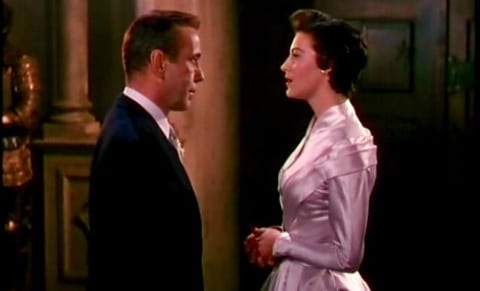
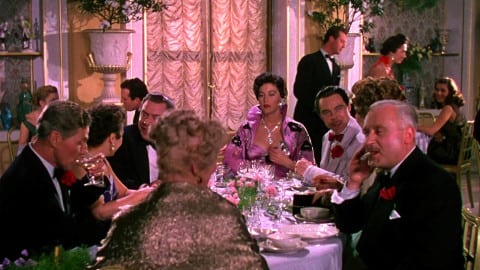

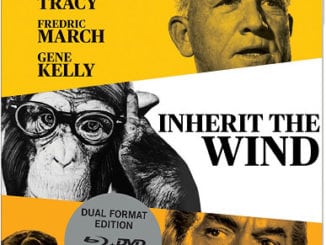
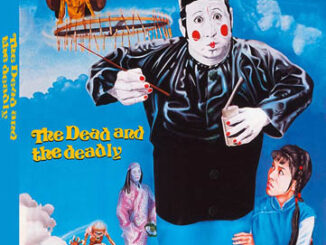
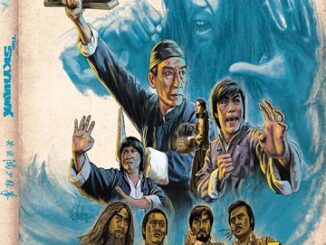
Be the first to comment